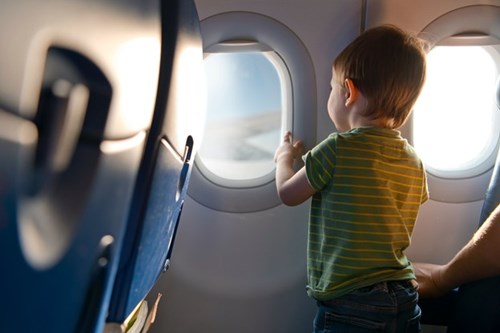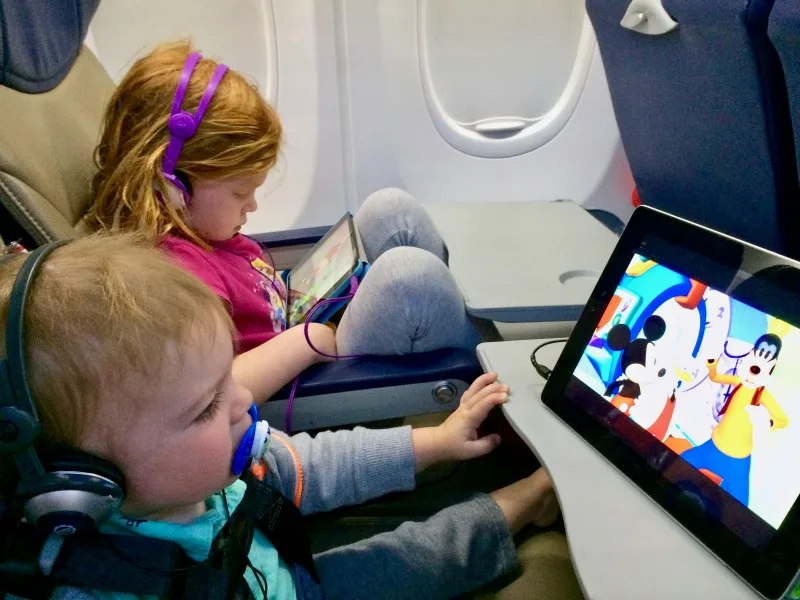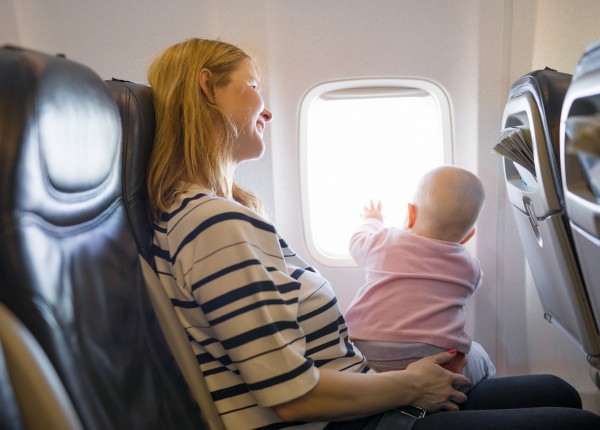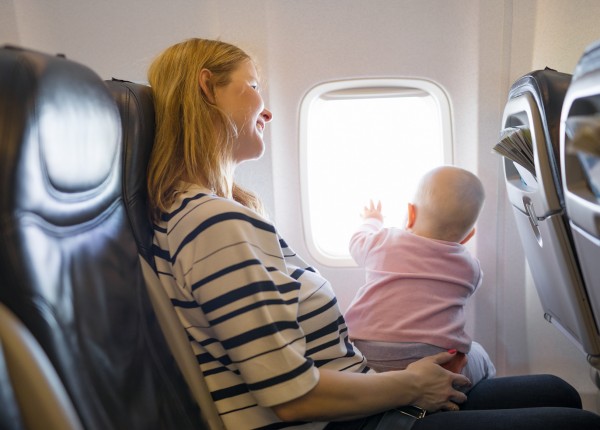Going on a first flight can be an exciting experience for kids, but it may also bring about some nervousness. To ensure a smooth and enjoyable journey, there are a few things you can do to prepare your little ones. Familiarize them with the process of flying, from going through security to boarding the plane. Talk to them about what to expect during the flight, such as the sensation of takeoff and landing. Encourage them to pack a small bag with their favorite toys or activities to keep them entertained. Also, it’s important to remind them to stay seated and follow the instructions of the flight attendants. By taking these simple steps, you can help your kids feel more at ease and excited for their first flight.
Choosing the Right Flight Time
When it comes to planning your child’s first flight, choosing the right flight time can make a big difference in their overall experience. You want to aim for a time that aligns with their regular routine as much as possible. This means considering their sleep schedule, meal times, and activity levels.
Consider the child’s regular routine
Take into account your child’s daily routine when selecting a flight time. If your child is used to taking a nap in the afternoon, try to find a flight that allows them to continue this routine. Similarly, if they are early risers, a morning flight may be more suitable. By sticking to their regular routine as closely as possible, you can help them feel more comfortable and at ease during the journey.
Opt for non-stop flights
As a first-time flyer, it’s best to choose non-stop flights whenever possible. Layovers and connecting flights can add unnecessary stress and potential delays to your child’s journey. Opting for a non-stop flight means less time spent in transit and fewer opportunities for your child to become overwhelmed or bored.
Avoid peak travel times
Peak travel times, such as holidays and weekends, can result in crowded airports and long queues. To minimize stress for both you and your child, try to avoid traveling during these busy periods. Instead, opt for flights during weekdays or off-peak seasons for a smoother travel experience.
Plan for shorter flights
For their first flight, it’s a good idea to start with a shorter journey. This way, your child can get accustomed to the airplane environment without feeling overwhelmed by a long duration. As they become more comfortable and confident with flying, you can gradually increase the length of their flights.
Informing and Educating the Child
Preparing your child for their first flight goes beyond just physical preparation. It’s important to inform and educate them about the process of flying, airport security, and airplane etiquette to ensure a smooth and enjoyable journey for everyone involved.
Explain the process of flying
Take the time to explain to your child what to expect during the flight. Talk to them about the check-in process, boarding the plane, and the importance of buckling their seatbelt. Use simple and age-appropriate language to help them understand the steps involved in flying. By providing them with a clear picture of what to expect, you can help alleviate any anxiety or uncertainty they may have.
Discuss airport security
Airport security procedures can be intimidating for anyone, especially children who may not fully understand why they are necessary. Take the time to explain to your child that security measures are in place to keep everyone safe. Reassure them that it is a normal part of the travel process and that there is nothing to worry about. Let them know that their belongings will be screened and that they may need to walk through a metal detector.
Teach kids about airplane etiquette
Good manners and respectful behavior are important both on the ground and in the air. Teach your child about airplane etiquette, such as being mindful of other passengers’ personal space, using indoor voices, and using headphones when watching videos or listening to music. By instilling these basic principles, you can help ensure a pleasant flight for everyone onboard.
Show them videos or books about flying
To further familiarize your child with the concept of flying, consider showing them videos or reading books about airplanes and airports. There are plenty of child-friendly resources available that can help explain the flying experience in an engaging and interactive way. This can help build excitement and anticipation for their upcoming journey.

Packing Essentials
When it comes to packing for your child’s first flight, being prepared can make all the difference. Make sure to pack the essentials that will keep your child comfortable, entertained, and well-fed throughout the journey.
Bring comfort items
Traveling can be an unfamiliar and potentially stressful experience for children. To help them feel more secure and at ease, pack their favorite comfort items such as a stuffed animal, blanket, or special toy. Having something familiar from home can provide them with a sense of comfort and familiarity during the flight.
Pack entertainment options
Long flights can easily become tedious for kids, so it’s important to pack entertainment options to keep them occupied. Depending on your child’s age, consider bringing coloring books, small toys, or portable games. A tablet or portable DVD player loaded with their favorite movies or TV shows can also be a lifesaver during the flight.
Include snacks and drinks
Airline meals may not always cater to your child’s preferences, so it’s a good idea to pack their favorite snacks and drinks. Opt for non-messy options and avoid foods that may trigger allergies or sensitivities. Bringing along a refillable water bottle is also important to keep your child hydrated throughout the journey.
Pack extra clothes and diapers
Accidents and spills can happen, especially when traveling with young children. Be sure to pack extra clothes and diapers to handle any unforeseen situations. It’s always better to be over-prepared than caught off guard.
Preparing Documents and Identification
Before embarking on your child’s first flight, it’s essential to prepare the necessary documents and identification to ensure a hassle-free journey. Being organized and having the required paperwork readily available will help things go smoothly at the airport.
Bring necessary identification
Make sure to bring along your child’s birth certificate or passport, depending on the requirements of your destination. Some airlines or countries may also require additional identification for children traveling internationally, so be sure to check the specific requirements beforehand.
Prepare medical documentation
If your child has any medical conditions or allergies, it’s important to have relevant documentation on hand. This can include doctor’s notes, prescriptions, or medical alert bracelets. Having these documents readily available can help in case of any medical emergencies or inquiries at the airport or during the flight.
Carry proof of relationship
If you are traveling alone with your child, it’s a good idea to carry proof of your relationship, such as a birth certificate or legal documentation. This can help prevent any confusion or issues during the check-in or immigration process, ensuring a smoother journey for both you and your child.
Consider travel insurance
While travel insurance is not mandatory, it’s a wise investment when traveling with children. Travel insurance can provide additional peace of mind by offering protection against unexpected events such as trip cancellations, delays, or lost baggage. Before purchasing a policy, make sure to review the coverage details and choose one that suits your specific needs.

Dressing Appropriately for the Flight
Choosing the right attire for your child’s flight is essential for their comfort and ease of movement. Keep these tips in mind to ensure they are dressed appropriately for the journey.
Choose comfortable clothing
Opt for loose-fitting, breathable clothing made from soft materials for optimum comfort during the flight. Avoid clothes with restrictive waistbands or tight-fitting shoes that may cause discomfort or restrict circulation. Comfortable clothing will make the travel experience much more enjoyable for your child.
Layer up for changing temperatures
Airplanes can often have fluctuating temperatures, so dressing your child in layers is key. This allows you to adjust their clothing accordingly to keep them comfortable throughout the flight. Remember to bring a lightweight sweater or jacket as well, as the cabin can sometimes get chilly.
Consider slip-on shoes
When going through airport security, having slip-on shoes can save time and hassle. Choose a pair of comfortable shoes that can easily be taken off and put back on, as they will likely need to be removed during the security screening process. Slip-on shoes also make it easier for your child to move around the cabin during the flight.
Avoid bulky accessories
While accessories can add style to an outfit, it’s best to avoid bulky accessories when traveling with children. Bulky jewelry, belts, or hats can become uncomfortable during a long journey and may need to be removed during security checks. Stick to lightweight and minimal accessories to keep things simple and fuss-free.
Navigating the Airport
Being well-prepared and organized at the airport can greatly contribute to a stress-free travel experience with your child. Follow these tips for smooth navigation through the airport.
Arrive early
Allow ample time at the airport to account for any unexpected delays or long queues. Arriving early can help you and your child relax and settle in before the flight. It also gives you time to familiarize yourselves with the airport layout and find your way to the departure gate without feeling rushed.
Use strollers and carriers
If your child is young or easily fatigued, consider using a stroller or carrier to navigate the airport. Most airports have designated stroller-friendly areas, making it convenient to transport your child through the terminal. Strollers can also double as a storage space for extra items such as carry-on bags or comfort items.
Visit the restroom before boarding
Before boarding the flight, it’s a good idea to ensure that your child has visited the restroom. This will help minimize the need for bathroom breaks during the flight and can help them feel more comfortable and settled.
Follow instructions at security
Airport security procedures can be strict and intimidating, especially for children. Remind your child to follow the instructions given by security personnel and cooperate throughout the screening process. By preparing them in advance and explaining what to expect, you can help alleviate any anxiety or confusion.

Airport Security Procedures
Airport security is an essential part of air travel and can sometimes feel overwhelming, especially for first-time flyers. Here are some tips to help your child navigate the security process with ease.
Explain the security process
Before arriving at the airport, take the time to explain the security process to your child. Let them know that their belongings will be screened, and they may need to walk through metal detectors or have their bags checked. Reinforce that it is a standard procedure and nothing to be afraid of.
Discuss metal detectors and X-ray machines
Young children may not be familiar with metal detectors or X-ray machines. Explain to them that these machines help ensure everyone’s safety by detecting any prohibited or dangerous items. Assure them that it is perfectly safe to walk through the metal detector and that it will not harm them in any way.
Practice going through security at home
You can help familiarize your child with the security process by practicing at home. Set up a makeshift security checkpoint using chairs or tape to mark the area. Encourage your child to walk through the “metal detector” (you can use a cardboard box), and explain that they need to put their belongings on the conveyor belt to be scanned. This hands-on experience can help alleviate any anxiety and make the actual airport security process less intimidating.
Avoid wearing items that may trigger alarms
To speed up the security screening process, avoid dressing your child in clothing or accessories that may trigger alarms. This includes clothing with excessive metal buttons, belts, or shoes with metal components. Simple and fuss-free attire can help minimize the need for additional screening.
Onboard Etiquette and Behavior
Good behavior onboard an airplane is essential for a pleasant and enjoyable journey for everyone. Teach your child about proper etiquette and behavior to ensure a smooth flight experience.
Teach polite behavior
Emphasize the importance of using polite language and behaving respectfully towards others. Remind your child to say “please” and “thank you” when interacting with the flight crew or other passengers. Encourage them to be considerate and patient throughout the flight.
Discuss the importance of listening to the crew
Listening to the instructions given by the flight crew is crucial for everyone’s safety. Explain to your child that it is important to listen and follow any directions given by the crew, such as fastening seatbelts, staying seated during turbulence, or putting electronic devices away when instructed. Emphasize that the crew’s primary goal is to ensure everyone’s well-being.
Explain airplane safety rules
Airplane safety rules are in place to protect passengers in the event of an emergency. Take the time to explain some of the basic safety rules to your child, such as the location of emergency exits, the importance of fastening seatbelts, and the proper use of oxygen masks and life vests. By familiarizing them with these safety procedures, you can help alleviate any fear or anxiety they may have.
Emphasize the need for staying seated
During the flight, it’s important to teach your child the importance of staying seated unless using the restroom or following the crew’s instructions. This helps maintain a calm and safe environment for everyone onboard and reduces the risk of accidents or injuries.

In-Flight Entertainment and Activities
To keep your child engaged and entertained during the flight, pack a variety of age-appropriate activities and entertainment options. Here are some ideas to keep them occupied throughout the journey.
Bring age-appropriate activities
Consider your child’s age and interests when selecting in-flight activities. Coloring books, puzzles, and small toys can provide hours of entertainment. For older children, consider bringing travel-sized board games or card games. The key is to choose activities that are compact and can be easily enjoyed in a confined space.
Pack electronic devices and headphones
Electronic devices such as tablets, smartphones, or portable gaming consoles can be a lifesaver during long flights. Load them with age-appropriate games, movies, or educational apps to keep your child engaged. Don’t forget to pack a pair of comfortable headphones to ensure they can enjoy their entertainment without disturbing others.
Encourage reading or coloring
Books and coloring materials are great options to keep your child entertained while also stimulating their imagination. Pack their favorite books or introduce them to new stories. Coloring books and crayons can also provide a calming and creative activity during the flight.
Play travel-friendly games
There are several travel-friendly games available that can be enjoyed onboard. Magnetic board games, travel-sized puzzles, or handheld electronic games can be a fun and interactive way to pass the time. Look for games that are compact, easy to pack, and suitable for your child’s age.
Dealing with Airplane Ear
Airplane ear, also known as ear barotrauma, is a common discomfort experienced during flights due to changes in air pressure. Here are some tips to help your child deal with this discomfort.
Explain the discomfort of air pressure changes
Talk to your child about the potential discomfort they might experience due to air pressure changes during takeoff and landing. Let them know that it is a common occurrence and that there are ways to alleviate the discomfort.
Offer gum or lollipops
Chewing gum or sucking on lollipops can help equalize the pressure in the ears and reduce discomfort. For younger children, consider sugar-free options or small candies to prevent any choking hazards.
Encourage swallowing or yawning
Swallowing or yawning can also help relieve the pressure in the ears. Encourage your child to drink water, eat a snack, or yawn intentionally to alleviate any discomfort. For infants, feeding them during takeoff and landing can help.
Consider using earplugs or pressure-regulating ear plugs
If your child is particularly sensitive to changes in air pressure, consider using earplugs or pressure-regulating ear plugs. These devices can help equalize the pressure in the ears and minimize discomfort. Make sure to choose child-sized earplugs that are safe and comfortable to wear.
By following these tips and being well-prepared, you can ensure that your child’s first flight is a positive and enjoyable experience. Remember, the key is to provide them with the right information, prepare them for the journey ahead, and keep them comfortable and entertained throughout. Safe travels!

